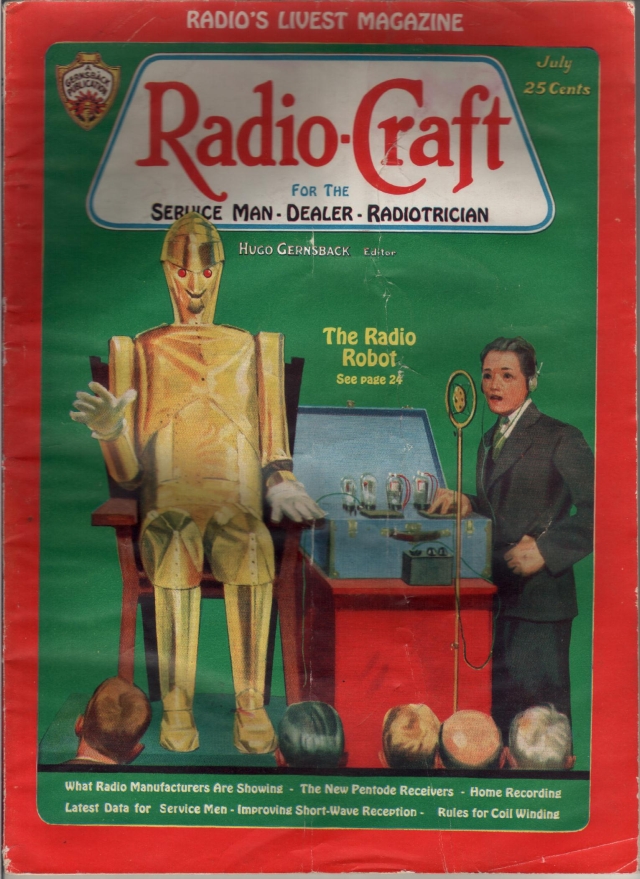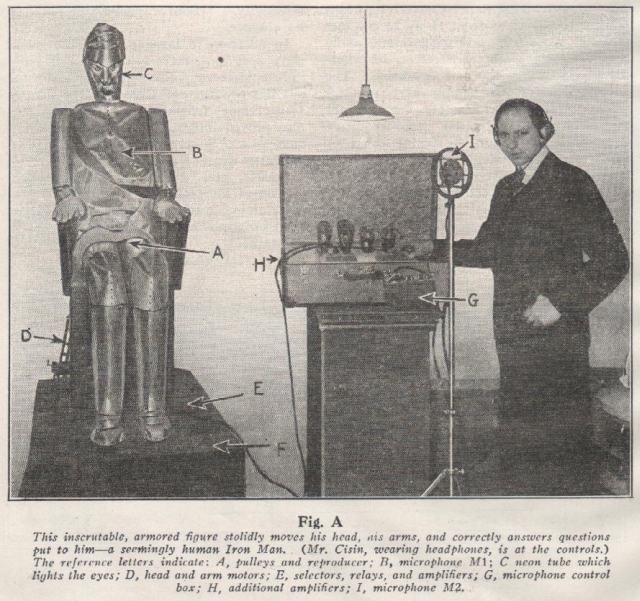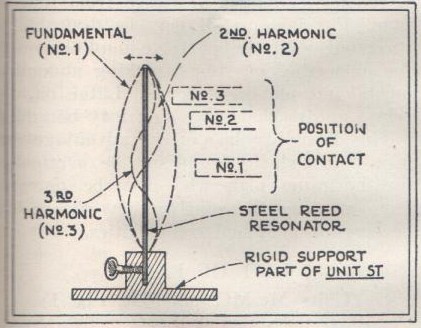

Here's a cut down version of the first page. The full article is found by the pdf link at the bottom of this article.
A clever New York radio engineer, Mr. Paul Von Kunits, has created "Mr. Radio Robot," a remarkable device which is attracting unusual attention and proving a source of profit to its originator. The idea is passed along in this article, with complete details, to other radio men, as "Mr. Radio Robot" can undoubtedly be used to advantage in many towns and cities throughout the country. The cover illustration gives an excellent idea of the appearance of the "Iron Man." From a theatrical costumer was procured the coat of mail used to represent a medieval armored knight. Such ensembles are fairly common, since they are extensively used for masquerades, and they can be rented or purchased at a reasonable price. Before giving details as to the construction and actual mechanism of the robot, some of the startling things he can do may be mentioned. In response to a pre-determined series of whistled notes, or the whistling of a given tune, "Mr. Radio Robot" will stand up, sit down, move his left arm or his right arm, turn his head, fire a gun, start to talk, etc.
He will also go through a definite series of operations, which may be worked out in advance. For example, in response to a command in a certain tone, the "Iron Man" will stand up, move his head, make a speech, lift either arm to emphasize certain points, bow at the end of the speech, and then sit clown. While he is talking, his eyes and teeth will be illuminated with a light of fluctuating brilliancy.
Furthermore, this robot will answer questions intelligently; and can be used to make announcements and to entertain with the latest song or other musical selections. If desired, "Mr. Radio Robot" can be made to go through the various mechanical motions by means of switches or push-buttons located at a distance; or manual and audible control may be dispensed with and he may be actuated through the mere interruption of an invisible ultra-violet beam. Thus an arrangement is possible, whereby he will fire a gun, or stand up, or start to talk—if someone walks past him.
In the cover illustration, the robot is shown answering questions put to it. There is a reproducer concealed in its chest; and a microphone (within it) at a distance of about five feet from the ground and therefore on a level with the mouths of people asking the questions. The operator and the portable amplifier may be located at any convenient point, no matter how far from the robot. It will be noted (Fig. A) [see pic above] that the operator uses a headset and that he talks into a microphone. Its adjustments are. made on the small control box in front of the amplifier.Giving Commands by Sound.
The signal selector system, whereby a pre-determined series of notes of different pitches and timbres are used to actuate the mechanical man. A sound-proof wooden box contains nine differently tuned vibrator reeds, together with nine electromagnets, one in front of each vibrator reed; three of them being connected in parallel on each of the three electrical circuits.
When a note of the required tone and pitch is sounded or whistled before the microphone , the microphone amplifier magnifies the impulse sufficiently to actuate the speaker. The amplified sound coming out of the speaker causes the reed which is tuned to correspond to this one note to vibrate; this, in turn induces a feeble current within the electromagnet placed before it. By varying the position of the magnet, with relation to the vibrating reed, it is possible to pick off either the fundamental, second harmonic, or the third harmonic, clearly illustrated in the figure above. Incidentally, one reed will respond also to notes either one or two octaves higher than the fundamental.
This sound control activated by whistle tones is used by a few of the early robots, including Capt Alban Roberts "Kaiser", and Wensley's "Televox". See also this post on early enabling technologies.
Complete pdf here Radio Robot 1931 Von Kunits
